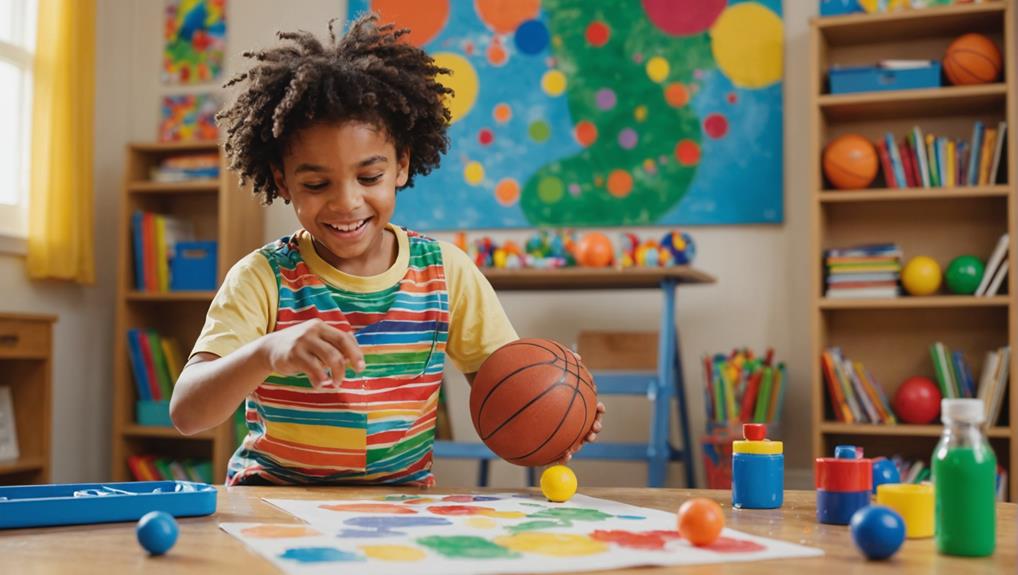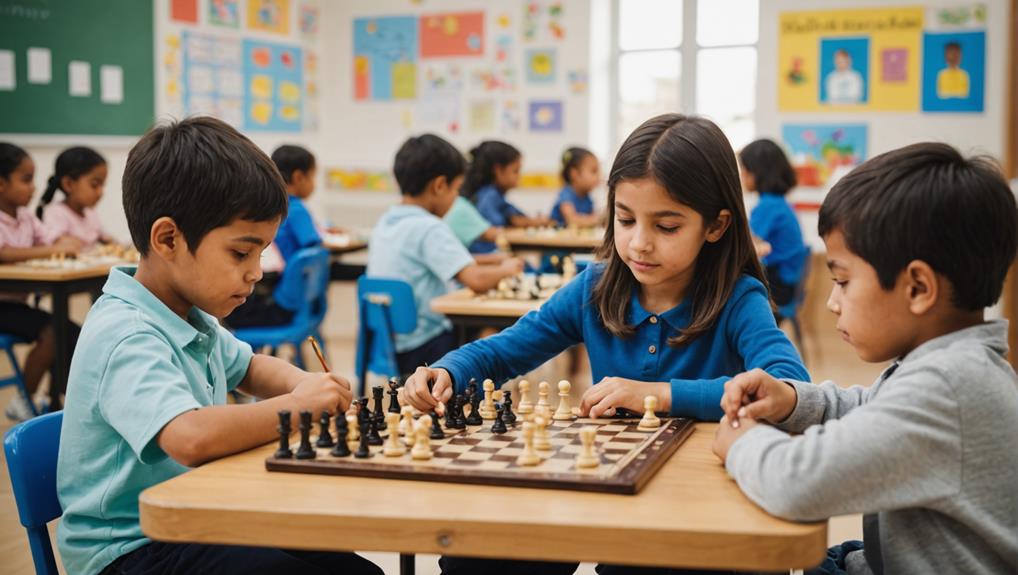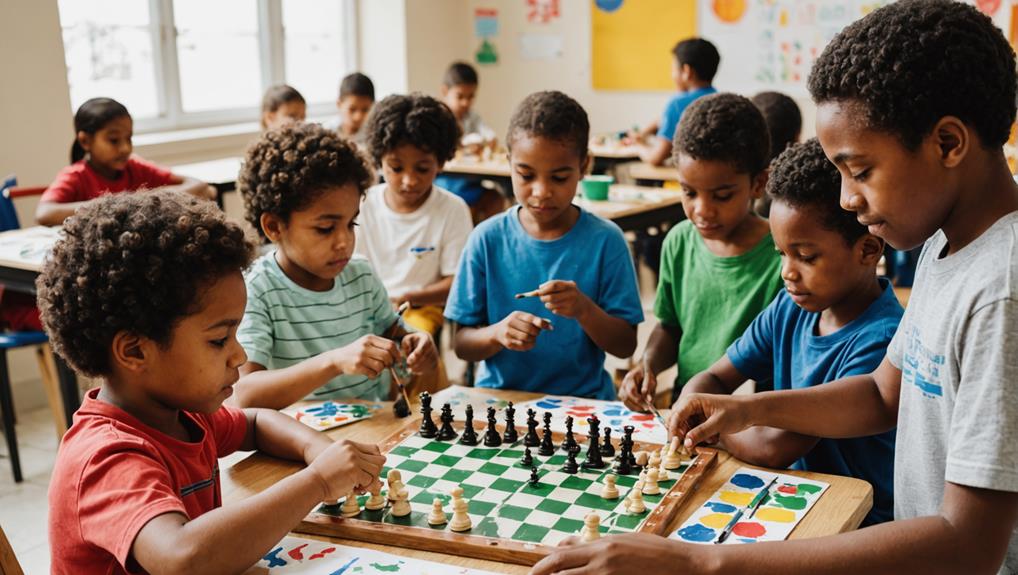Choosing suitable ADHD extracurricular activities for children can be challenging, but it is also an opportunity to support focus and development. Structured activities like theater, dance, or arts and crafts help channel their energy while encouraging creativity. Outdoor programs like scouting also provide positive outlets, and hands-on activities like cooking or coding can offer cognitive benefits. Selecting activities that match their interests can help your child thrive while building essential skills.
When considering ADHD extracurricular activities, focus on programs that provide structure and clear goals. These activities offer support for ADHD in children and give them a sense of accomplishment. Strategies for parents include looking for activities that engage their child’s interests and provide opportunities for both social interaction and focus support. A suitable activity can make a lasting difference in your child’s creative, physical, or academic development.
Key Takeaways
- Physical activities like swimming or individual sports increase focus and provide a comfortable setting for social interactions.
- Performing arts activities like theater and music can help with emotional regulation and offer a supportive environment.
- Low-stress activities such as cooking and arts/crafts nurture creativity and concentration, making them ideal for children with ADHD.
- Mixed-age activities such as book clubs or team sports can provide diverse perspectives and enhance social skills.
- Selecting fun activities, boosting self-esteem, and providing a safe space for children with ADHD are essential.
Understanding ADHD and Extracurricular Activities
Why is selecting the correct extracurricular activities for children with ADHD so crucial? Children with ADHD often face challenges with attention, coordination, and social interactions, making it difficult for them to participate in organized sports and other structured activities. Therefore, it is essential to carefully consider the type of extracurricular activities that can offer a supportive environment, structure, and opportunities for self-regulation.
Pediatric Occupational Therapy provides strategies such as sensory integration, which can be very helpful in extracurricular activities. By incorporating these methods, children with ADHD can improve their focus and self-regulation skills through play-based learning.
Taking into account the symptoms of ADHD, including daydreaming, forgetfulness, fidgetiness, and excessive talking – these can significantly affect the child’s participation in traditional activities. However, the performing arts, like theater, music, dance, and debate clubs, provide excellent outlets for these children. They offer a rehearsal structure that supports emotional regulation and boosts self-esteem.
Moreover, hands-on arts and crafts activities offer tangible, physical outcomes as incentives. This helps nurture concentration in children with ADHD, boost their self-esteem, and engage all their senses. In summary, selecting the appropriate extracurricular activities for children with ADHD requires a deep understanding of their specific needs and symptoms. It is critical to support their development and help them thrive in a nurturing and organized setting.
Physical Activities and ADHD
Engaging in regular physical activity, such as a mere 20 minutes of exercise a day, can significantly enhance the mental and social capabilities of children with ADHD. Physical activity is a natural and effective way to manage ADHD symptoms, promoting an increase in levels of dopamine, a neurotransmitter associated with focus, motivation, and pleasure. This aligns with the current neurobiological understanding of ADHD, which asserts the pivotal role of dopamine function in attention and executive functions.
Sports like swimming, martial arts, and soccer, which require coordination and movement, can notably improve focus and impulse control, thereby enriching mood. The structure and guidance in these activities can help children with ADHD channel their energy positively and productively. This is consistent with evidence-based OT behavior strategies that aim to support children with ADHD.
While providing necessary physical activity, team sports also offer a platform for social interaction, helping children build vital social skills. However, for those who struggle with the pressure of team dynamics, individual sports can also be a great choice, providing the same benefits in a more comfortable setting.
Incorporating regular physical activities into the daily routine of children with ADHD can improve their essential well-being and positively impact their behavior and cognitive function. The key is choosing activities the child enjoys, thus ensuring continued participation and long-term benefit.
Avoiding Excessive Competition

Excessive competition can be a source of stress for children with ADHD and may worsen their symptoms. Implementing behavioral strategies that focus on positive reinforcement and clear expectations can help manage this stress. It is crucial to understand their specific triggers and provide low-stress activity alternatives that still engage their interests and help them develop skills. Striking a balance between competition and fun through structured play dates and social interaction skills can foster a more positive and conducive environment for their growth and development.
Understanding Competition Triggers
Often, children with ADHD find themselves feeling overwhelmed in performance-based activities such as dance or theater, as these may trigger stress and impact their enjoyment. These competition triggers can exacerbate ADHD symptoms like intense feelings, leading to heightened feelings of inadequacy or a crippling fear of failure.
Understanding and recognizing these triggers is pivotal for parents and caregivers who are guiding children with ADHD through the maze of extracurricular activities available. It’s crucial to be aware of the signs of ADHD, such as impulsivity and difficulty sustaining focus, which could be exacerbated in high-pressure, competitive environments. In a competitive environment, the pressure to perform can be significant. For a child with ADHD who may already struggle with self-esteem and concentration, the experience can be rather challenging. This stress can, in turn, become a barrier to participation, diminishing what should be a positive experience.
However, it’s vital to note that the aim is not to shield children from competition completely but to manage their exposure. Controlled competition can promote resilience and teach valuable life skills. The key is to ensure that the child is not overwhelmed and that the focus remains on enjoyment and learning rather than just winning. Therefore, understanding competition triggers is essential in creating a low-stress, enriching environment for children with ADHD.
Low-Stress Activity Alternatives
Exploring the world of extracurricular activities for children with ADHD requires careful deliberation and thoughtful insight. Understanding the potential challenges competitive environments may pose for these children is vital. Low-stress alternatives can be an excellent solution, balancing fun and learning while minimizing stressors.
Consider options such as cooking, arts, and crafts. These activities allow children to engage creatively and tangibly, often proving therapeutic and rewarding. Performance activities like dance or theater might seem appealing, but they may trigger stress for children with ADHD. Instead, low-pressure alternatives provide a more suitable and enjoyable extracurricular engagement.
Reading clubs and playing musical instruments are other excellent options. They foster skills while offering a relaxed and collaborative environment.
Here’s an overview of some potential activities and their benefits:
| Activity | Benefit |
|---|---|
| Cooking | Boosts creativity and practical skills |
| Arts & Crafts | Sparks imagination and fine motor skills |
| Reading Clubs | Promotes literacy and social interaction |
| Musical Instruments | Encourages discipline and self-expression |
Balancing Competition and Fun
Traversing the terrain of competitive events poses a different challenge for children with ADHD. While these activities can improve social abilities, the competitive aspect may trigger stress, affecting their enjoyment and performance. Thus, a delicate equilibrium between competition and enjoyment is vital.
Considering this, personal sports are preferable. They provide the excitement of competition without the stress of group dynamics. These activities not only support physical well-being, but structured routines can also instill a sense of predictability and control, which is essential for children with ADHD.
Relaxed activities like cooking, arts, and crafts offer engaging alternatives, nurturing creativity and patience. On the other hand, performance activities such as dance or theater may induce stress. Assessing children’s comfort levels and introducing them gradually to such settings is vital, ensuring their well-being remains paramount.
Book clubs and musical instruments provide excellent paths for low-stress, enjoyable extracurricular pursuits. These not only improve cognitive abilities but also encourage patience and discipline.
Navigating competitive events requires understanding each child’s specific needs and abilities. Striking a balance involves patience, empathy, and a focus on enjoyment over intense competition. Amidst it all, remembering that the aim is to develop skills and pleasure can guide parents in making the best choices for their children.
Role of Supporting Adults
A significant proportion of coaches and sponsors may not possess the necessary skills to handle the specific challenges associated with ADHD effectively. The child must receive explicit 1:1 instruction alongside frequent checks for understanding. Implementing ongoing movement drills can also be beneficial, as they cater to the child’s need for physical stimulation.
Parents play an essential role in creating a supportive environment. By communicating distinct cues and signals for breaks or adjustments, they can assist coaches in better understanding their child’s needs. Furthermore, they can help children articulate their strengths and weaknesses, fostering a positive and empathetic environment for all participants.
The following table provides a visual representation of some strategies that can be utilized:
| Role | Strategy | Benefit |
|---|---|---|
| Coach | Ongoing movement drills | Cater to physical stimulation needs |
| Coach | 1:1 instruction | Tailored guidance |
| Parent | Communicate distinct cues | Personalized support |
| Parent | Articulate strengths/weaknesses | Positive and empathetic environment |
Importance of Fun

The element of fun in ADHD-friendly extracurricular activities cannot be exaggerated. Children with ADHD, like all children, thrive when they are engaged and enjoying what they are doing. The importance of fun in these activities catalyzes their continued participation and overall well-being.
Activities chosen should benefit the child’s ADHD and be enjoyable and stimulating. Involving children in the selection process of these activities is critical. Giving them agency in this choice can significantly improve their engagement and enjoyment. This process respects their uniqueness and acknowledges their capabilities despite their condition.
Hence, regular assessment of the child’s engagement in the chosen extracurricular activity is necessary. This evaluation ensures that the fun element remains intact and the child still benefits from the activity. Losing sight of the fun aspect can lead to disinterest and lack of participation. Therefore, maintaining a balance between the therapeutic benefits of the activity and its fun quotient is essential for the child’s continuous involvement and progress.
Boosting Self-Esteem in ADHD Kids
Children with ADHD frequently struggle with confidence issues, a battle often worsened by constant corrections, unfavorable comparisons, and negative comments. With the appropriate steps in place, we can turn these obstacles into opportunities for development, and one such avenue is through extracurricular pursuits.
Extracurricular activities can act as a safe space for ADHD kids, offering them an environment where they can excel without the fear of constant criticism. They provide a platform for ADHD kids to delve into their interests, utilize their potential, and enhance their self-confidence.
| Extracurricular Pursuit | Benefits to ADHD Kids | Outcome |
|---|---|---|
| Sports | Improves ability to focus and cooperate | Bolsters self-assurance |
| Arts and Crafts | Nurtures creativity and patience | Cultivates self-expression |
| Music/Drama | Promotes discipline and teamwork | Foster’s sense of accomplishment |
These pursuits not only cater to their individual needs but also assist them in recognizing their strengths. This, in turn, strengthens their confidence and prepares them for future challenges. By identifying and nurturing their talents, we can aid ADHD kids in transforming the confidence hurdles they face into stepping stones toward growth and success.
Academic Challenges for ADHD Kids

Traversing the academic landscape can often prove challenging for kids with ADHD as they grapple with feelings of inadequacy and a disturbing sense of being outsiders. Understanding social expectations and coping with academic pressures can lead to intense anxiety, impacting their self-esteem. These educational challenges underscore the need for a secure sanctuary where they can excel and feel successful.
- Secure Sanctuary: Extracurricular activities can be a refuge from these academic pressures. They allow ADHD kids to navigate their interests and showcase their talents, fostering a sense of accomplishment and enhancing self-esteem.
- Supportive Atmosphere: A supportive atmosphere can help ADHD kids to navigate their academic challenges. Compassionate teachers, empathetic peers, and accommodating curriculums can go a long way in making them feel included and capable.
- Enhancing Self-Esteem: The right kind of encouragement can cultivate self-belief, allowing these children to face their academic challenges with resilience.
In essence, while overcoming academic challenges for ADHD kids may seem overwhelming, the right mix of a secure sanctuary, a supportive atmosphere, and enhancing self-esteem can enable them to thrive and reach their full potential.
Considerations Before Starting an Activity
Before immersing your child in any extracurricular activity, it is essential to evaluate several factors to guarantee a positive and enriching experience for them. Chief among these factors is understanding your child’s needs and interests. An activity that aligns with their interests will naturally keep them engaged and motivated, thereby assisting them in building confidence.
The activity should also provide opportunities for your child to establish relationships, allowing them to develop crucial social skills. Friendships formed through these activities can offer psychological support, aiding emotional regulation. Considering your parental work schedules and self-care needs, a sense of equilibrium should be sought. It’s essential to remember that as a parent, you also need to maintain a healthy balance between work, personal care, and supporting your child.
Lastly, safety is paramount. The activity chosen should provide a haven for your child to investigate, learn, and grow without fear. Prioritizing such activities ensures their physical safety and creates an environment conducive to excelling and building confidence. These considerations go a long way in creating an enriching, ADHD-friendly extracurricular experience for your child.
Developmental Pace of ADHD Kids

Understanding the developmental speed of children with ADHD can be a complex process. These children may develop slower than their peers, impacting their social progress and academic accomplishments. Their distinct pace should be acknowledged and respected to ensure they receive assistance and understanding.
- Engaging in mixed-age activities can be advantageous for ADHD kids. They can learn from older peers and mentor younger ones, promoting self-esteem and resilience in facing challenges.
- Changing friendship dynamics due to ADHD symptoms can influence social interactions and relationships. ADHD kids must receive guidance to navigate these dynamics.
- Maintaining friendships is vital for ADHD kids to build a support system and navigate social challenges. Strategies like clear communication and structured activities can help keep these essential relationships.
Exploring Various Extracurricular Activities
Exploring the wide range of extracurricular activities, we find numerous opportunities suitable for children with ADHD. Theatre, music, and dance provide structured environments that improve skill development. Hands-on arts like visual arts and crafts can elevate self-esteem and focus. Scouts offer outdoor activities, physical benefits, and a diverse environment to cater to different types of ADHD.
| Extracurricular Activities | Benefits | Suitable for ADHD because |
|---|---|---|
| Theater, Music, Dance | Structured environments, skill development | Allow for expressive outlets and a controlled setting |
| Hands-on Arts | Elevate self-esteem and focus | Provide creative, tactile involvement |
| Scouts | Outdoor activities, physical benefits | Cater to energy levels, promote teamwork |
Cooking classes can enrich life skills, creativity, focus, and self-esteem. Technology and coding classes are also advantageous, promoting logical thinking and problem-solving skills. They also prepare children for future careers, improving focus and creativity. By exploring these diverse ADHD-friendly extracurricular activities, parents and educators can create a supportive, stimulating environment for children grappling with ADHD. This exploration is not only beneficial for the children but also serves the larger community by fostering understanding and inclusivity.
Frequently Asked Questions
What are the best ADHD extracurricular activities for my child?
ADHD extracurricular activities should engage your child’s interests while improving focus and social skills. Look for sports, art, or music programs that provide structure and encourage positive energy release. Swimming, martial arts, tennis, gymnastics, and wrestling are ideal extracurricular activities for children with ADHD. These activities foster focus, self-control, and discipline while providing a constructive outlet for energy and aggression.
What Is the Best Sport for a Child With ADHD?
The best sport for a child with ADHD varies per person. Swimming, martial arts, tennis, gymnastics, and wrestling have proven effective due to their structured, focused, and disciplined environments that help manage ADHD symptoms effectively.
What Activities Are Good for ADHD Students?
Swimming, martial arts, and tennis provide physical outlets for ADHD students while performing arts foster creativity. Hands-on arts engage the senses, and structured activities like yoga improve focus. The key is to balance structure, social interaction, and skill development.
What Clubs Are Good for Kids With ADHD?
Theater, music, and dance clubs provide structured, creative outlets. Debate and mock trials improve focus and communication. Scouts promote goal-setting and outdoor exploration. Art classes enhance creativity and focus, while volunteering and cooking foster life skills and self-esteem.


Recent Comments